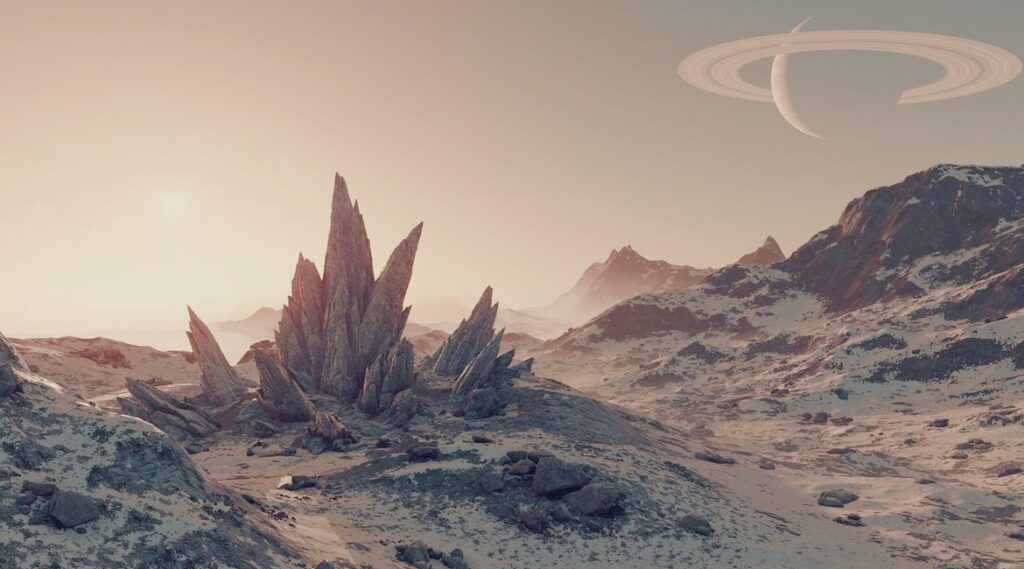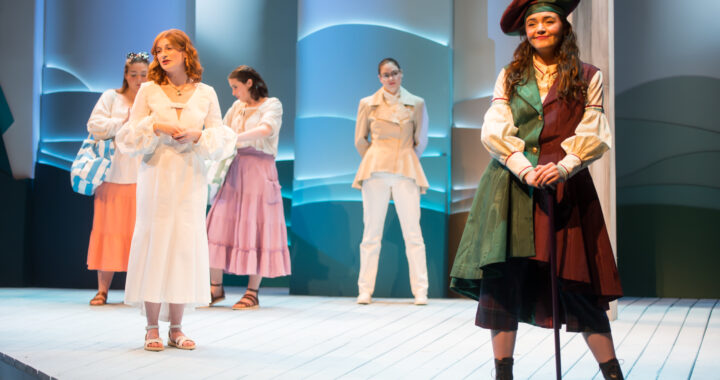Adventure into the far unknown with Bethesda’s “Starfield”
5 min read
“Starfield” has been in active-development since 2015 and was originally planned to release in November 2022. @starfieldgame / Instagram
by PEARL LEE
Senior Writer
Bethesda is known for creating the impressive “The Elder Scrolls V: Skyrim,” a game from 2011 that has gone down in history as one of the best games ever made, not only for its impressive world-building and unforgettable characters but also because it allows players to use mods—a process where the players can add more in-game details as opposed to what the developers already have—which is a fan favorite. In recent years, with Bethesda’s failure with “Fallout 76” and the horrendous launch of “Redfall,” gamers had reasonably pessimistic expectations of their next release, which put a lot of pressure on Bethesda. However, “Starfield,” which Bethesda released on Sept. 6, revindicated their notoriety, defending the name they created for themselves all those years ago.
The first ever Bethesda game I ever played was “Fallout 4,” which was released in 2015. When I first played it, I was blown away, for the game mechanics were easy to learn, and the vast richness of Bethesda’s storytelling and lore sucked me in.
So, when the official gameplay trailer for “Starfield” came out on June 11, my excitement grew because this game was so much bigger than aliens and spaceships; it had vast worlds with a lore that was intriguing and left players, including myself, wanting more. The game looked as if it was taken straight from a Christopher Nolan film, and it incorporated elements of existential thought, such as how small we really are as a species when compared to the much bigger universe out there. When players pick up their controller, they are flung into a much bigger galaxy than our own as they explore different planets and learn a secret that could change the fabric of the universe forever.
In addition to the alluring graphics, the sound design and music are also phenomenal. “Starfield” really pulls players in, especially if they wear headphones while playing, as the sounds contribute to the feeling of being immersed in the game. When playing with headphones, it feels as though you were there in person, and the difference in auditory perception when you take off and wear your space headgear is astonishing.
In conjunction with the audiovisual creation of the game, Bethesda also does a really great job of setting the mood. “Fallout 4” made you feel nostalgic for the 50s and 60s, only set in an apocalypse. In “Starfield,” it looks like watching a movie. All of the details are so realistic, from hair to reflections on helmets, so when you jump into the boots of the main character, you truly feel like an adventurer about to experience your big break and make a name for yourself.
When “Starfield” was announced, Bethesda emphasized how customizable everything was—from your avatar’s visual appearance to your spaceship’s shape and design. But, while everything might have been stated as customizable, I was quickly let down when the game prompted me to customize my character because the hairstyles for your character seemed lackluster. There is a wide variety to choose from, but I wanted more, especially because they emphasized this aspect of the game.
When you get to the actual backstory customizing for your own character, you can pick over 21 different lore-involved backgrounds for your character and over 16 different traits. I feel like Bethesda could have possibly combined some of the backgrounds into one instead of having the player be conflicted about choosing between the same background with very small differences.
Additionally, the traits were confusing because they referenced specific factions—groups that the player can join—that the player may not be familiar with. This was rather nonsensical to offer, especially at the beginning where the player is still learning the expository details of the game.
It’s even more frustrating when you realize that you’re unable to change traits after finalizing them. For a game whose main selling point is customization, I’m disappointed and let down by these oversights. However, one of the main things I really do enjoy and want to emphasize is the ability to choose your character’s pronouns. While it may be considered a small detail, it matters in the long run because it feels inclusive for all gamers who want to enjoy this game.
Since this is a space game, it’s only fitting that you’ll be battling the ultimate foes: space pirates. The initial encounter you have with the pirates puts you on the edge of your seat. The ship they arrive in is beat up and dark gray with a red nose tip, and as it lowers, it shakes the screen and vibrates the controller with the engines overwhelming the audio.
The pirates themselves wear red and gray colors blended together. They wear helmets marked with a white ‘X,’ and some of them even have designs of skulls whose melted look would send chills down the spine of a dead man.
But, this impressive cutscene had nothing on the actual gameplay. When I actually pulled out my gun to start fighting, it was like night and day because the pirates were completely clueless. They ran all over the place, like headless chickens shooting aimlessly. They were able to get good hits off, but that was it, and I was dumbfounded because the pirates had all bark and no bite. It makes no sense why Bethesda would put so much design and effort into the space pirates and then make the A.I. have them act as knife-wielding toddlers running around unsupervised.
“Starfield” is a game that I was unsure of but also excited about because of the way space games tend to be. Originally, I wasn’t convinced that it could be anything else but aliens and dog fights; however, as every new trailer and gameplay video came out, my unease decreased, and after sitting down and playing it, I now understand why Bethesda spent 25 years honing and creating an impact in the Action RPG genre.
This game is a love letter to everything space, especially Stanley Kubrick’s “2001: A Space Odyssey” and Christoper Nolan’s “Interstellar.” During the three hours I played—in which I completed the first mission—I was blown away by the graphics, the sound and how this game creates a world that treats every single one of its players like a real space adventurer. I absolutely love it, and it has the drive and potential to create a new standard in the space game genre.
While there are glaring issues underneath the glimmer of stars, Bethesda stepped up and knocked “Starfield” straight into the galaxy and beyond. I would rate this game an 8/10.
“Starfield” came out on Sep. 6 and is available on Xbox Series X&S, Xbox Cloud Gaming and Microsoft Windows.











